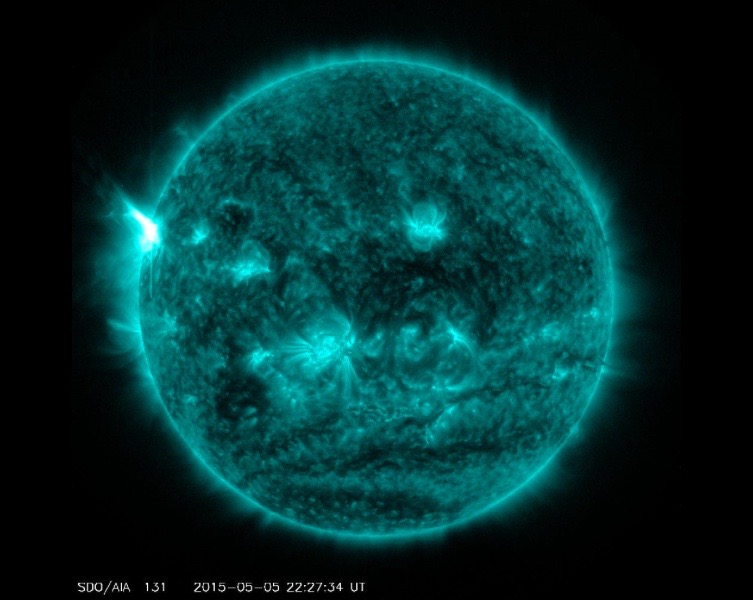
The sun unleashed its most intense flare of the year Tuesday (May 5), a monstrous blast that caused temporary radio blackouts throughout the Pacific region.
The X-class solar flare — the most powerful category of sun storm — erupted Tuesday from a sunspot called Active Region 2339 (AR2339), peaking at 6:11 p.m. EDT (2211 GMT). NASA's Solar Dynamics Observatory spacecraft captured a gorgeous video of the solar flare, recording it in multiple wavelengths of light.
Despite the radio blackouts, the blast is unlikely to cause major issues here on Earth, researchers said.
"Given the impulsive nature of this event, as well as the source location on the eastern limb of the sun, we are not expecting a radiation storm at Earth," scientists with the U.S. Space Weather Prediction Center (SWPC) in Boulder, Colorado, which is overseen by the National Oceanic and Atmospheric Administration, wrote in an update Tuesday evening.
"We will be on the lookout for new imagery from the NASA SOHO [Solar and Heliospheric Observatory] mission to determine if there was an associated coronal mass ejection (CME) with this event," they added. "Given the same logic above, however, we do not expect there to be one that would impact Earth."
CMEs are massive clouds of solar particles rocketed into space at millions of miles per hour. (Solar flares, by contrast, are blasts of high-energy radiation.) CMEs that hit Earth can trigger geomagnetic storms that can disrupt power grids and satellite navigation.
Scientists classify strong solar flares into three categories: C (weakest), M (mid-level) and X (the most powerful). X flares are 10 times more potent than M flares. Wednesday's outburst clocked in at X2.7, outranking the previous flare champion of 2015 — an X2.2 storm that erupted March 11 from a sunspot known as AR12297.
Get the Space.com Newsletter
Breaking space news, the latest updates on rocket launches, skywatching events and more!
There could be more sun-storm action coming soon, SWPC researchers said.
"We are expecting several active regions to be rotating onto the visible disk later this week and into the weekend," they wrote in the update. "We have observed a few energetic CMEs on the back side of the sun with these regions, so we expect that overall solar activity will be on the rise in the short to medium term."
Follow Mike Wall on Twitter @michaeldwall and Google+. Follow us @Spacedotcom, Facebook or Google+. Originally published on Space.com.
Join our Space Forums to keep talking space on the latest missions, night sky and more! And if you have a news tip, correction or comment, let us know at: community@space.com.

Michael Wall is a Senior Space Writer with Space.com and joined the team in 2010. He primarily covers exoplanets, spaceflight and military space, but has been known to dabble in the space art beat. His book about the search for alien life, "Out There," was published on Nov. 13, 2018. Before becoming a science writer, Michael worked as a herpetologist and wildlife biologist. He has a Ph.D. in evolutionary biology from the University of Sydney, Australia, a bachelor's degree from the University of Arizona, and a graduate certificate in science writing from the University of California, Santa Cruz. To find out what his latest project is, you can follow Michael on Twitter.